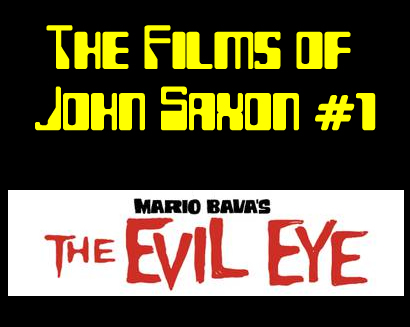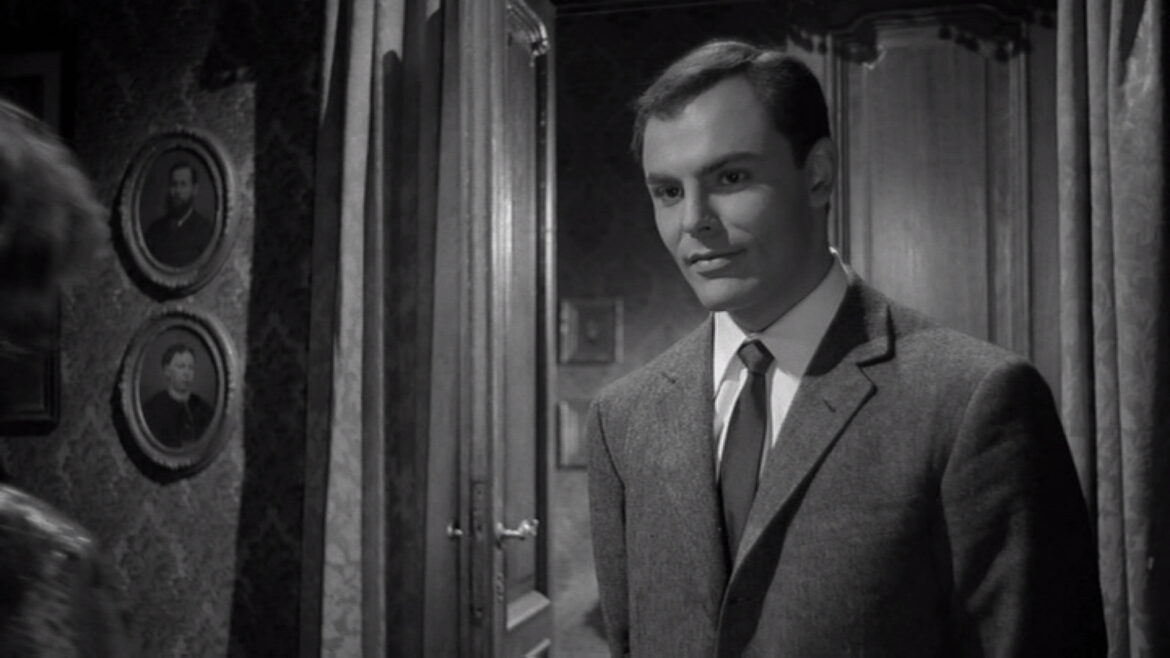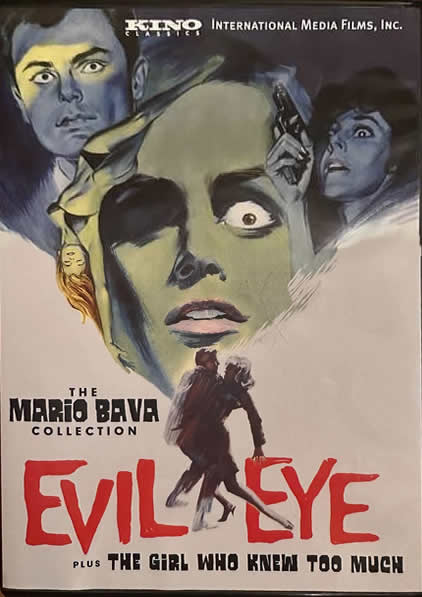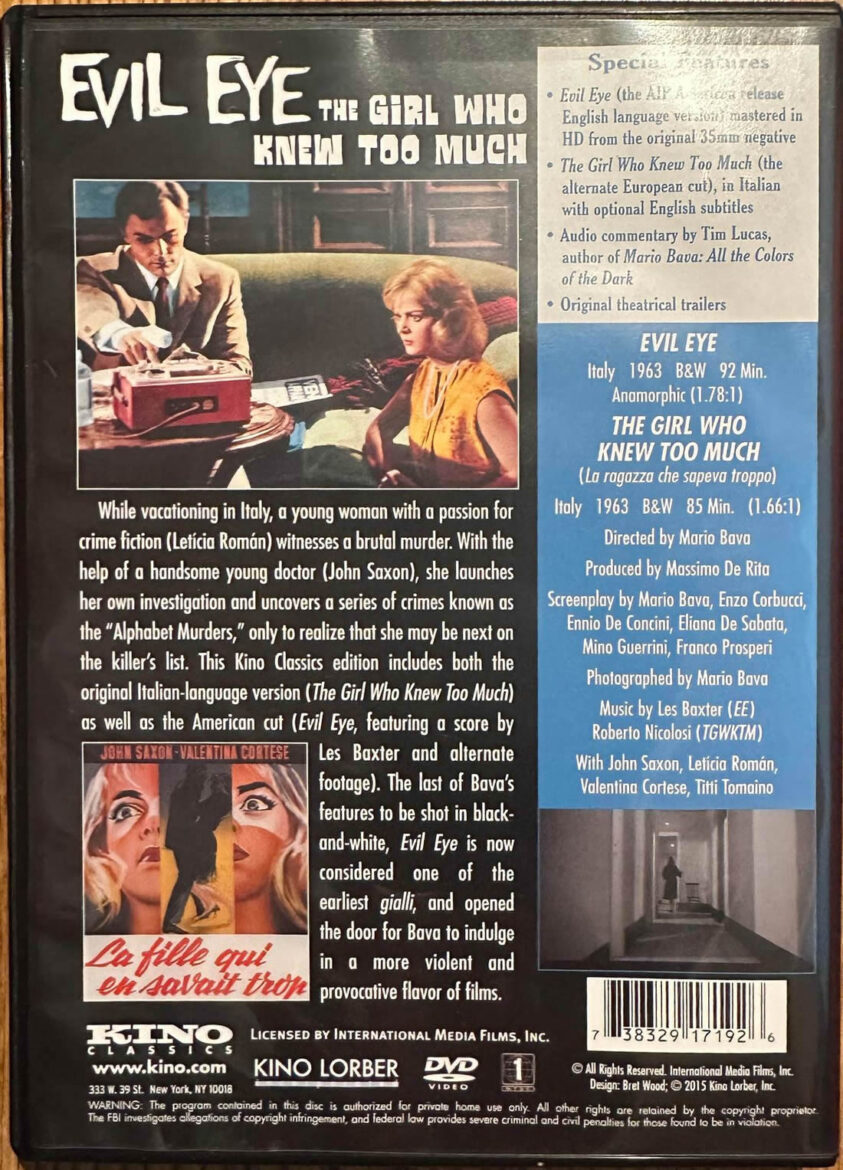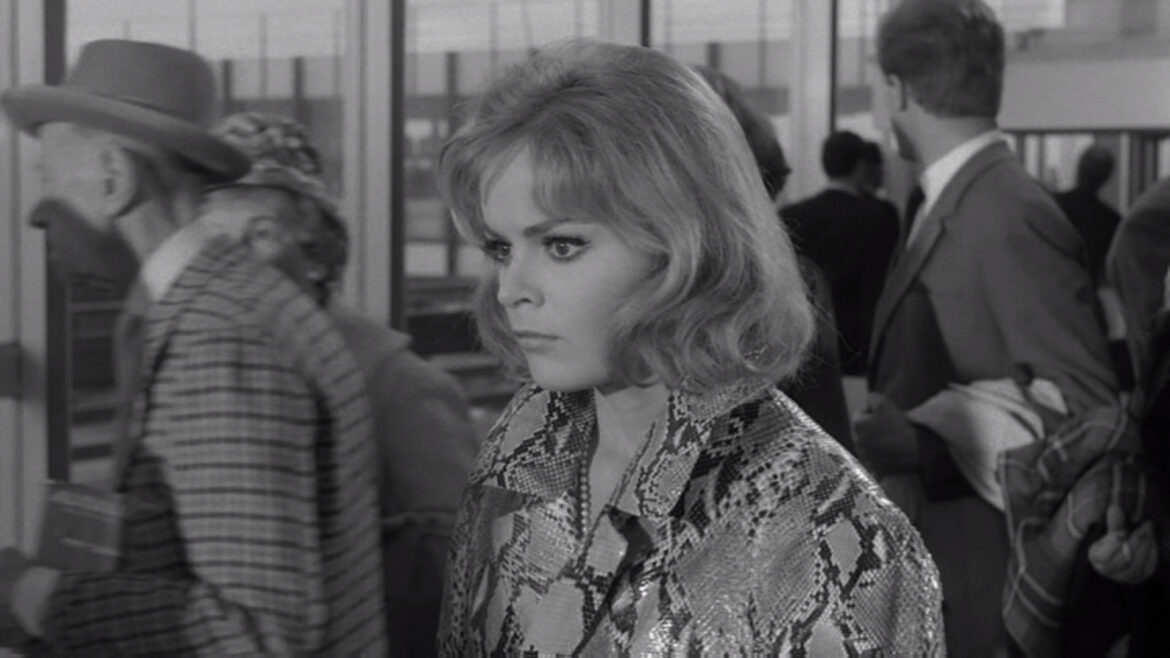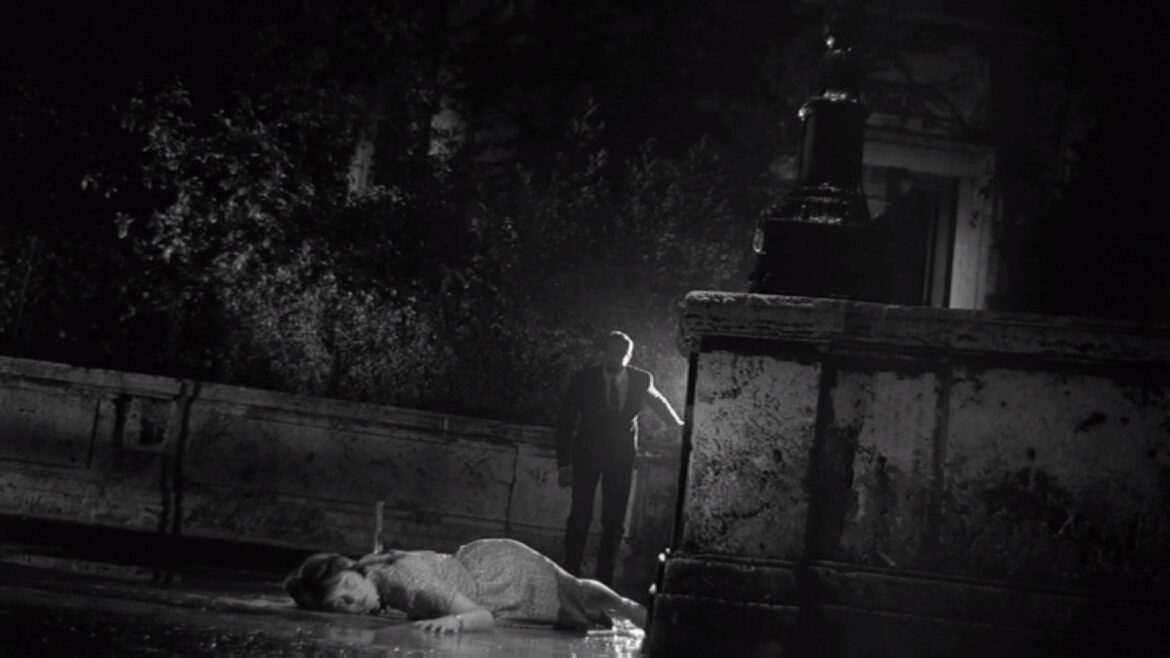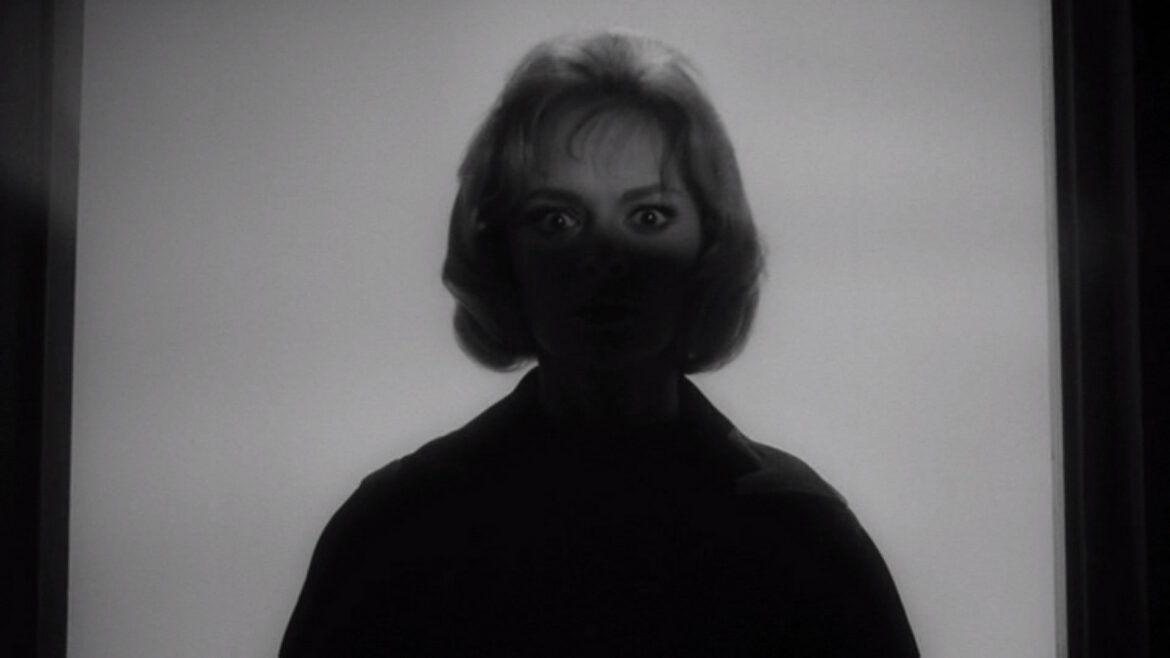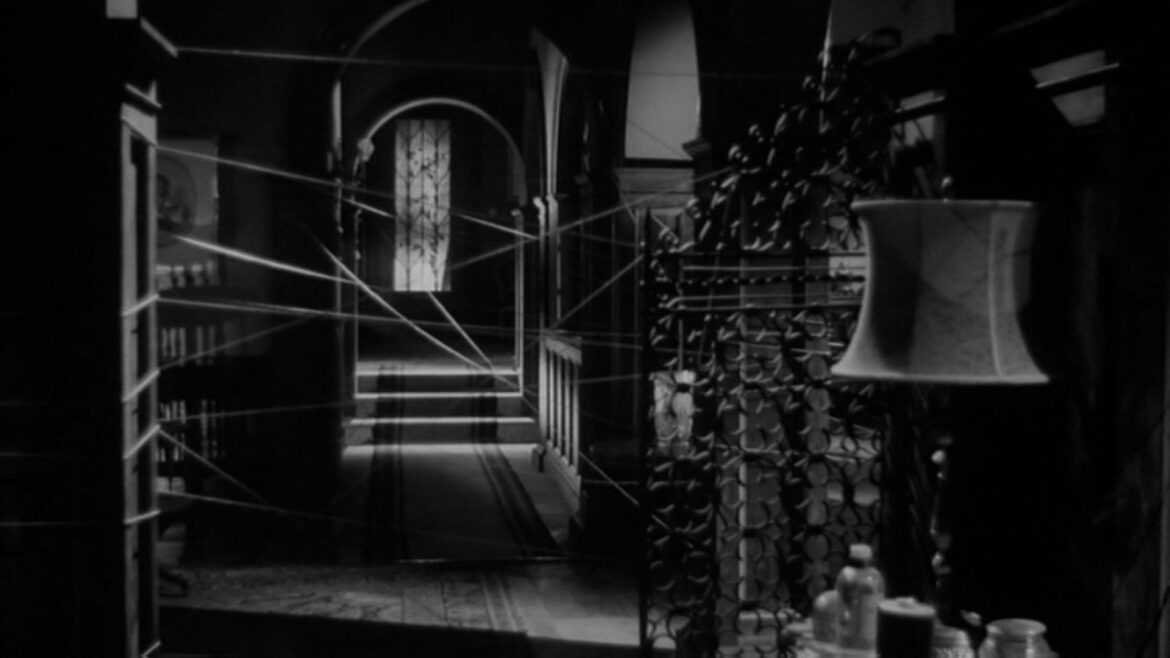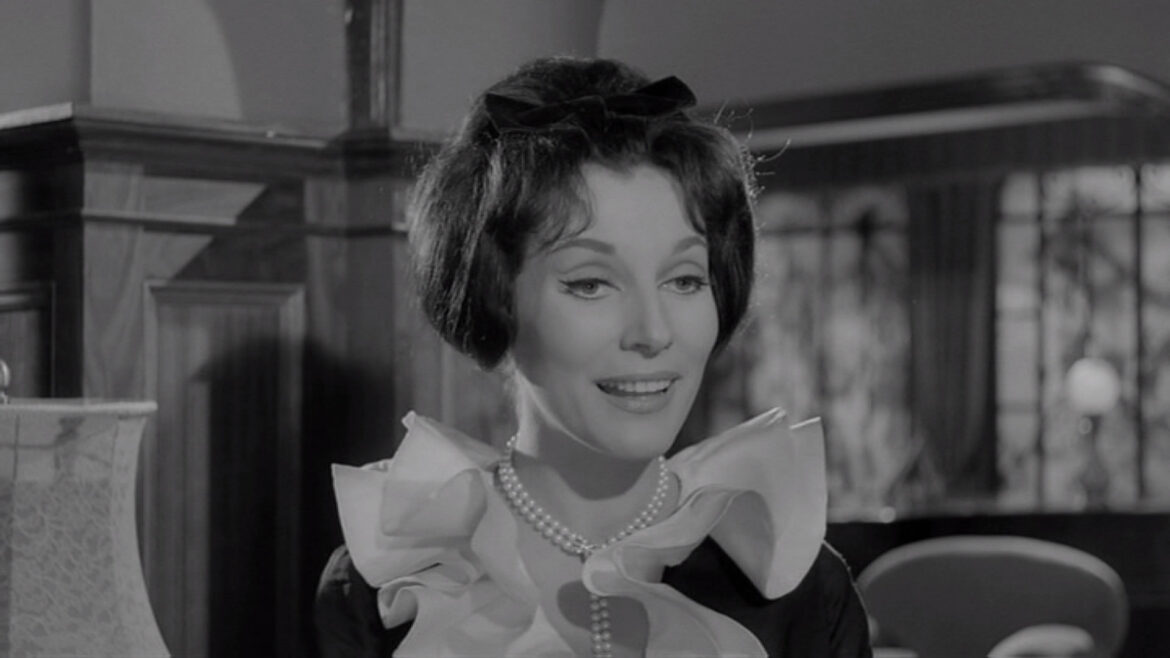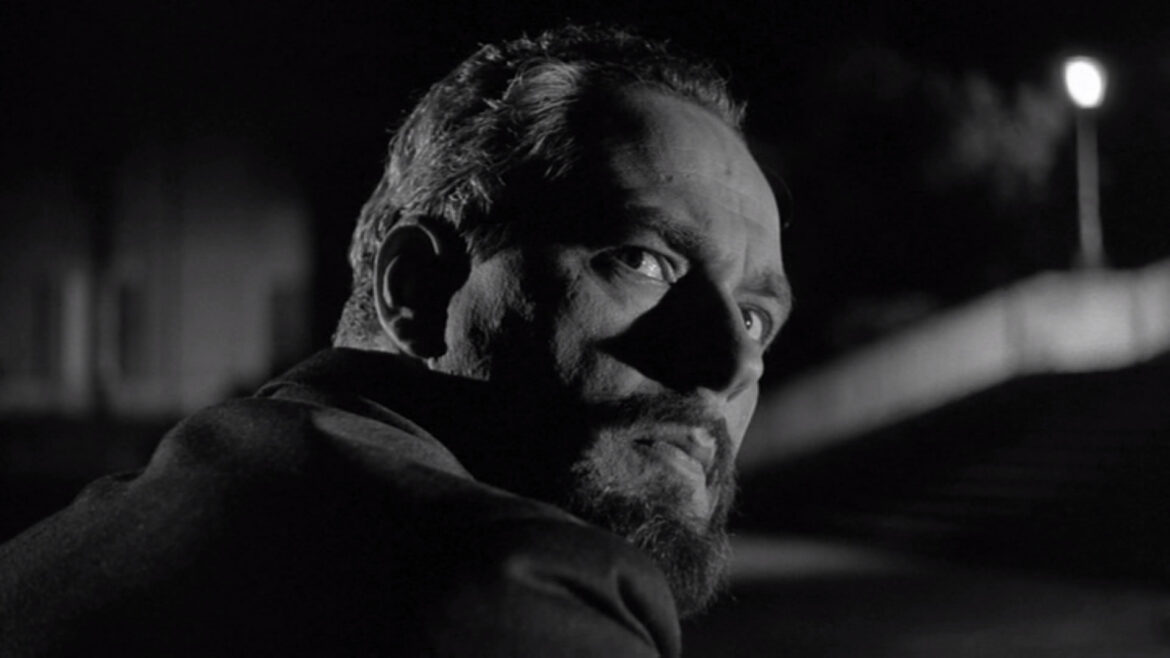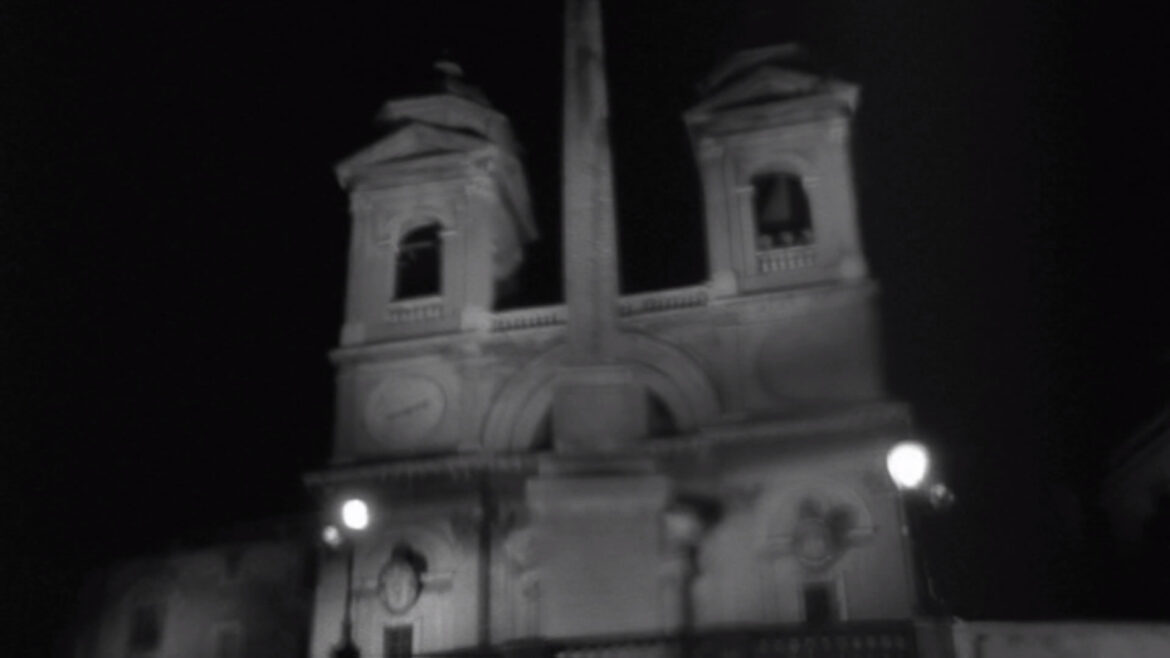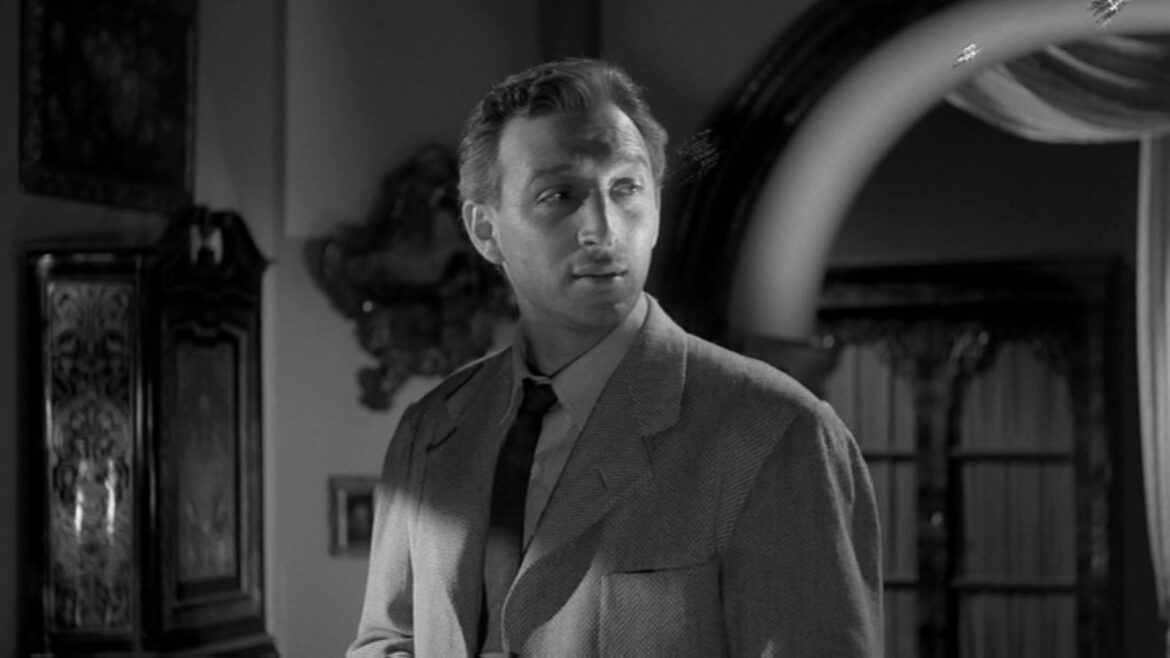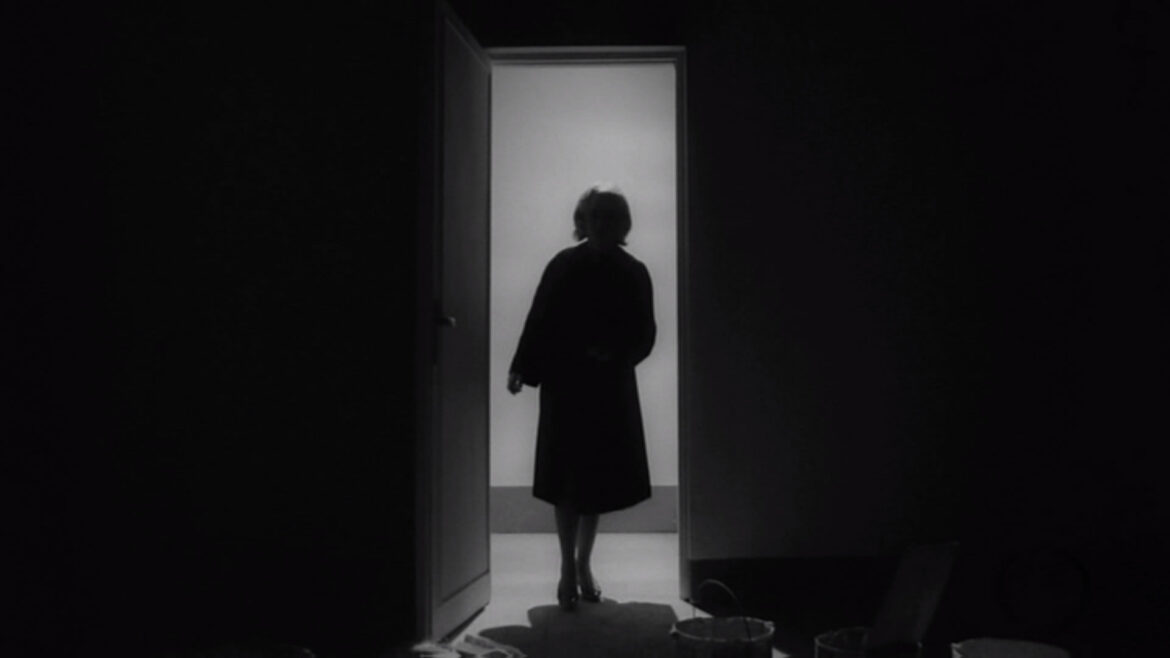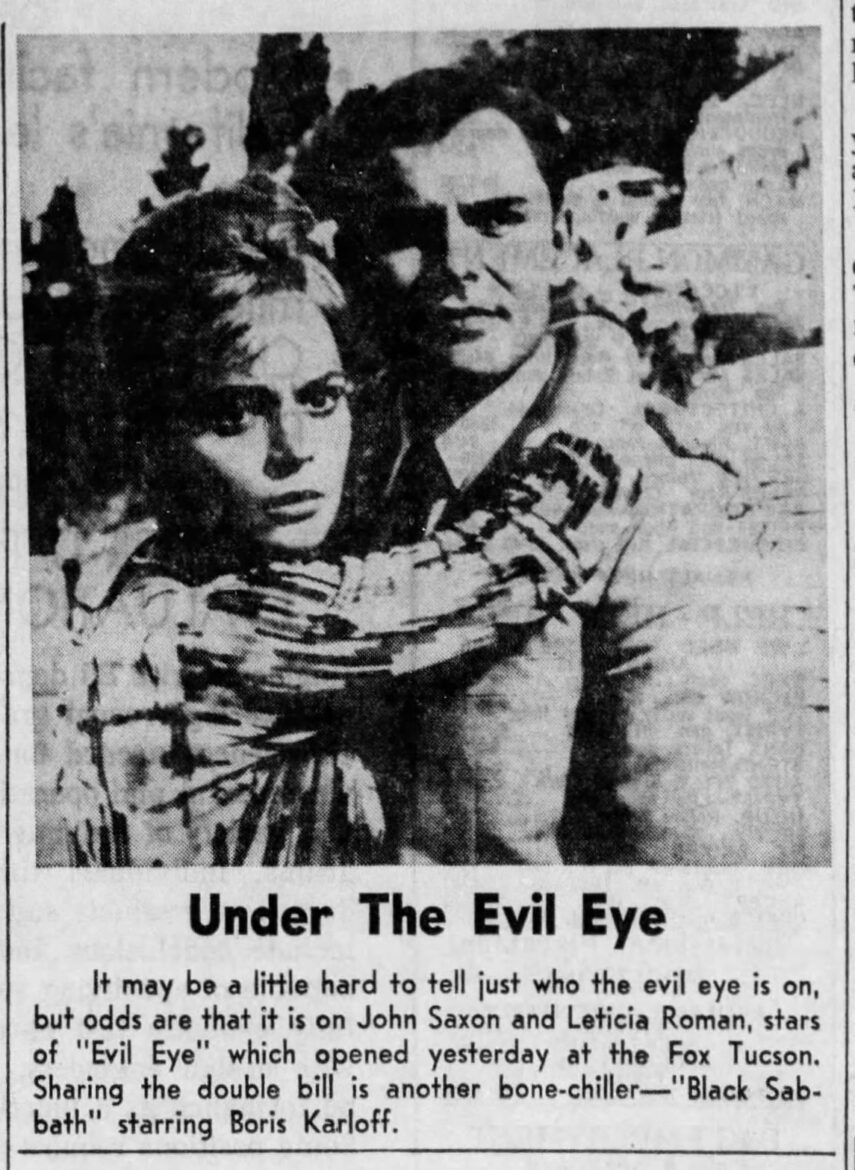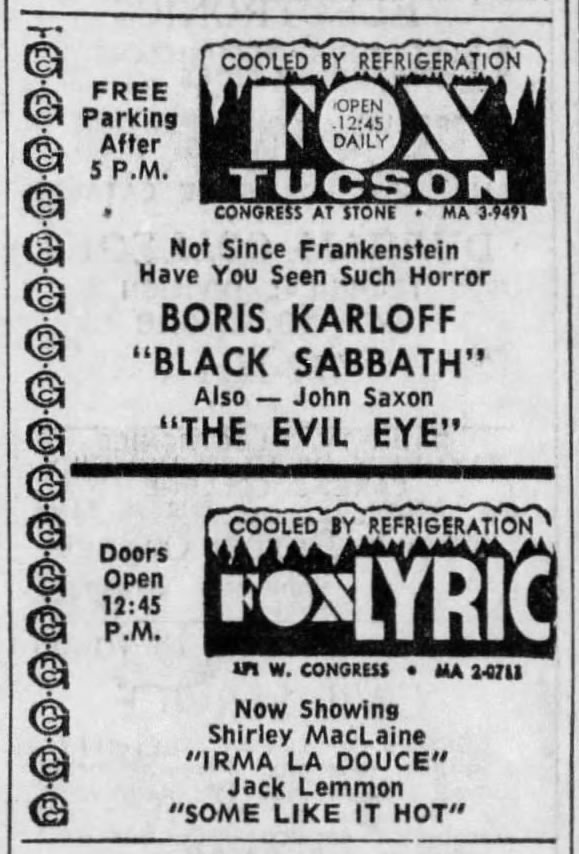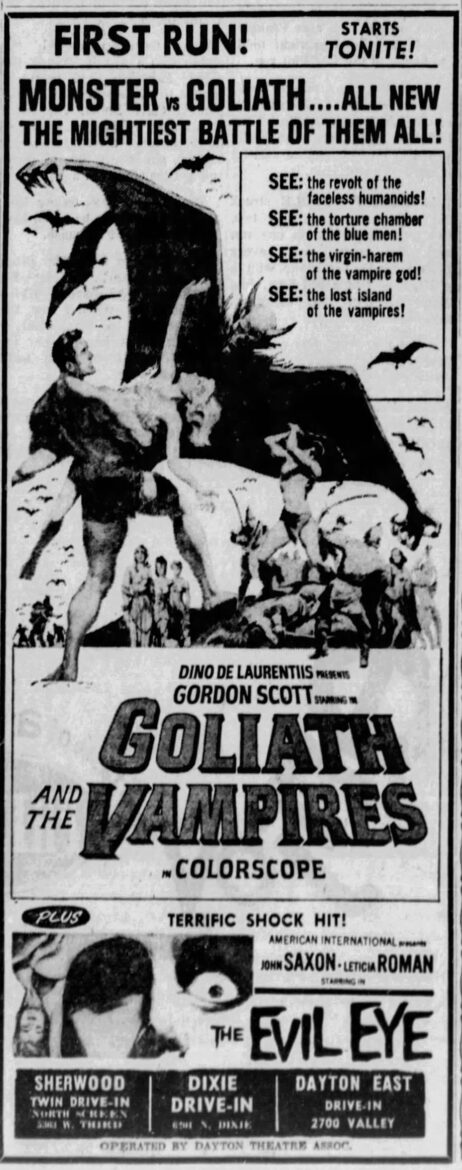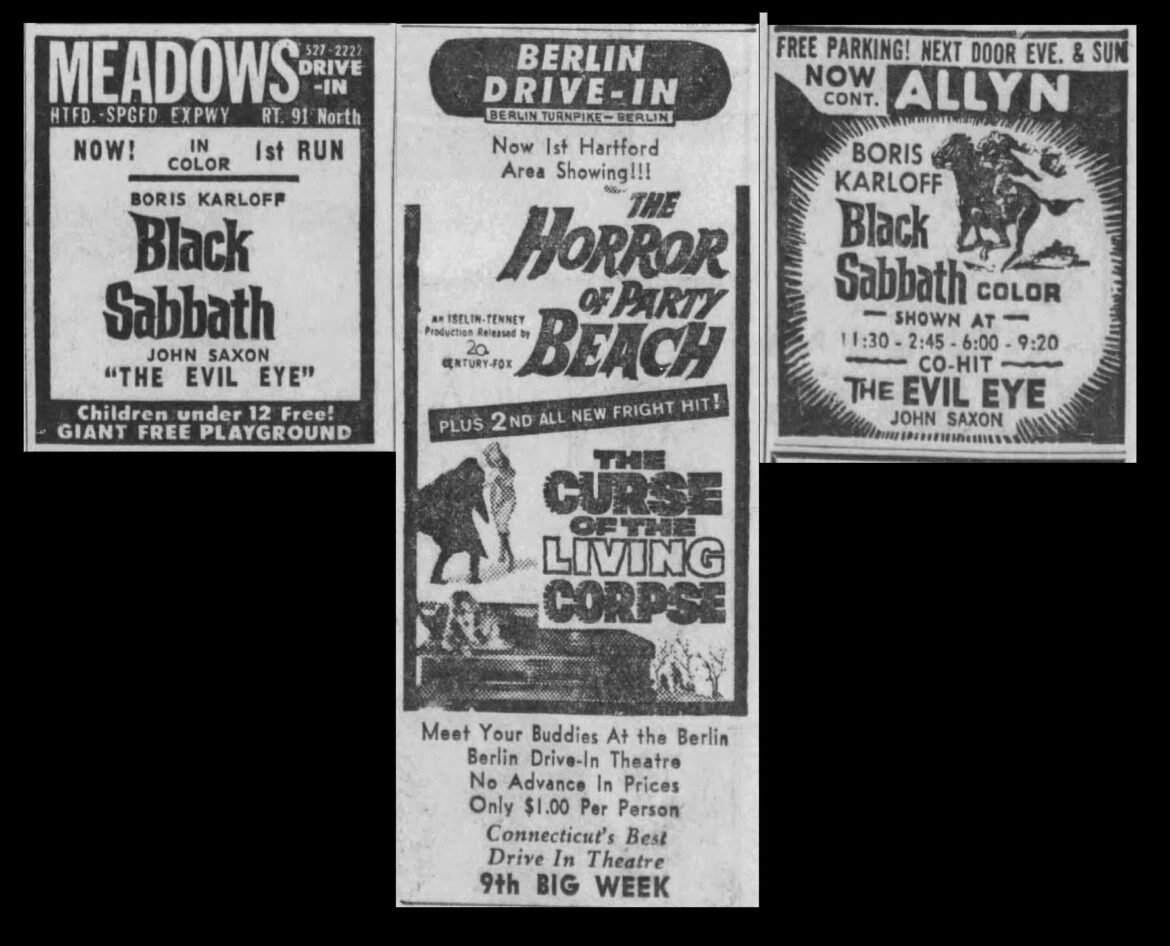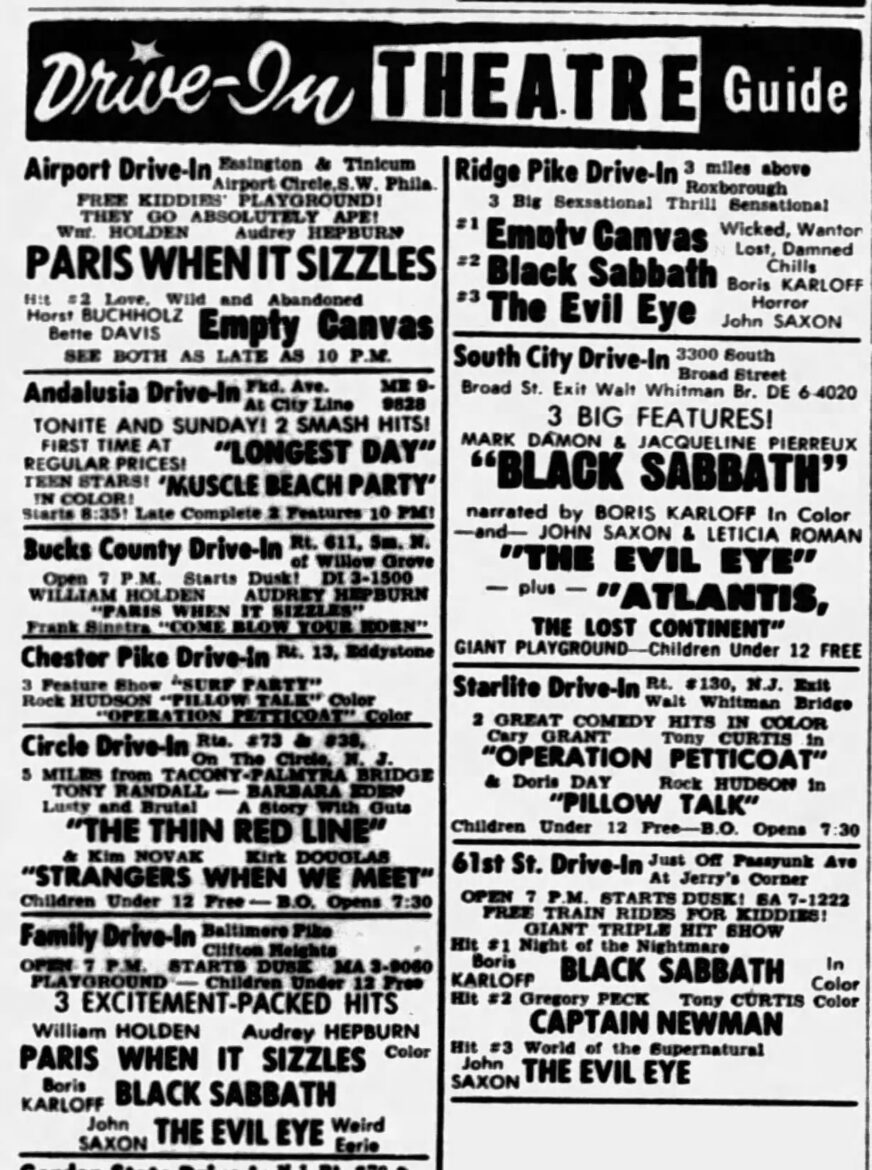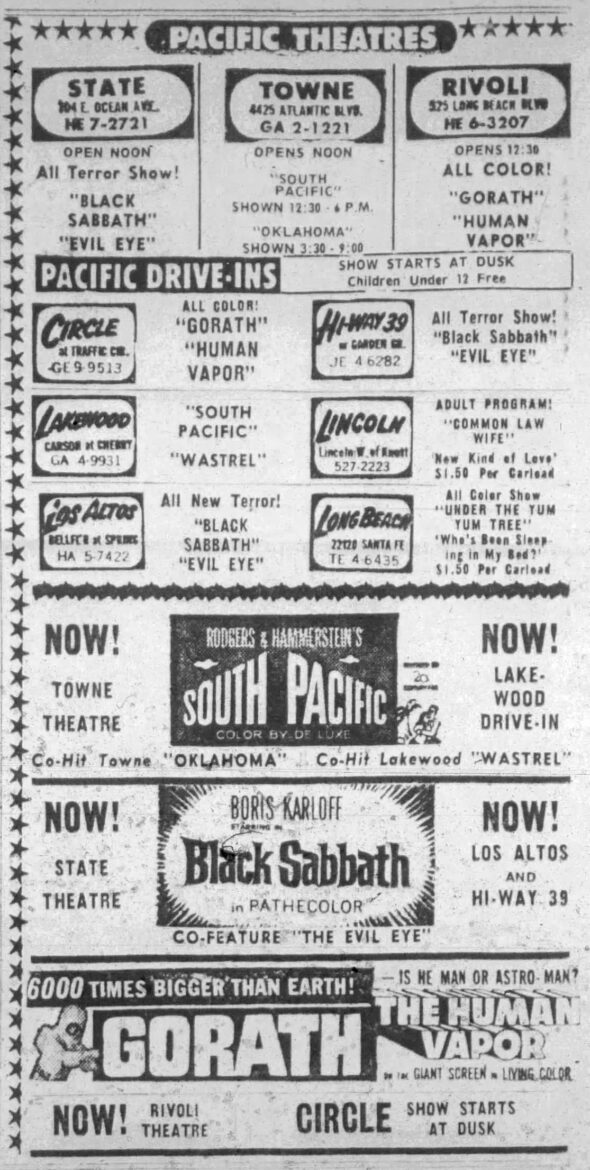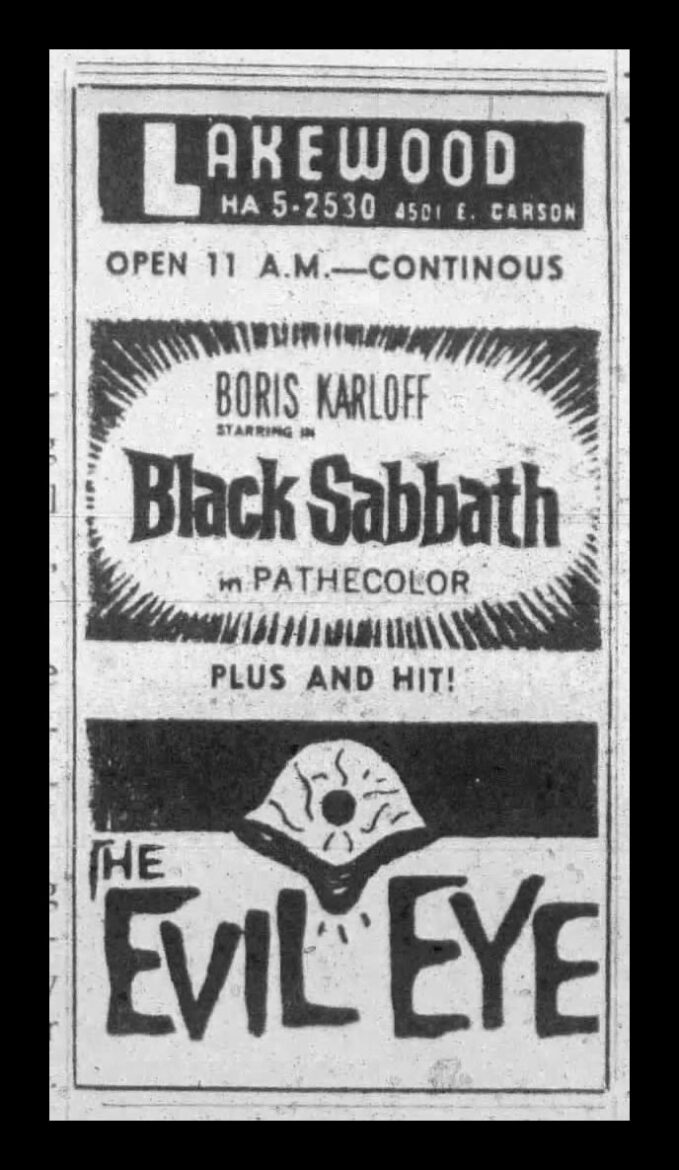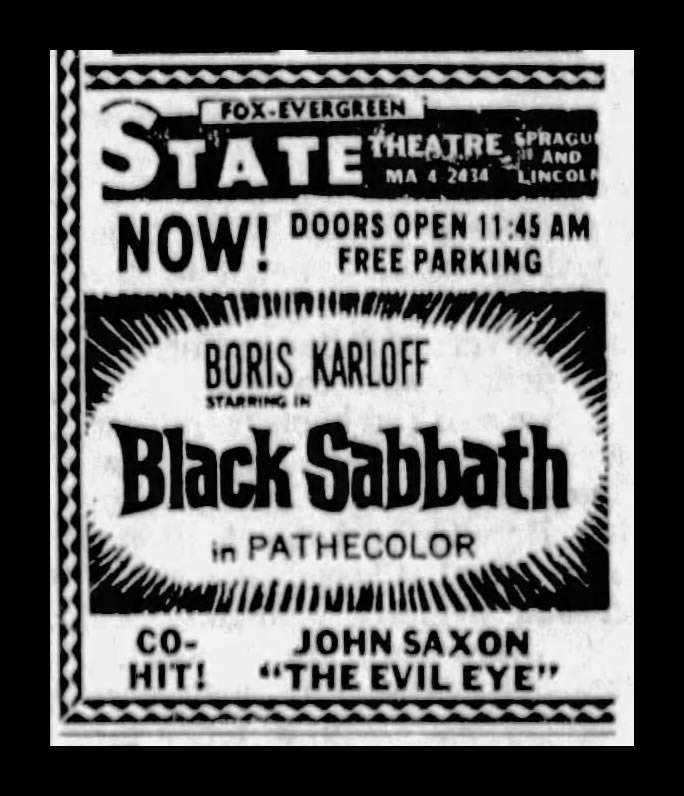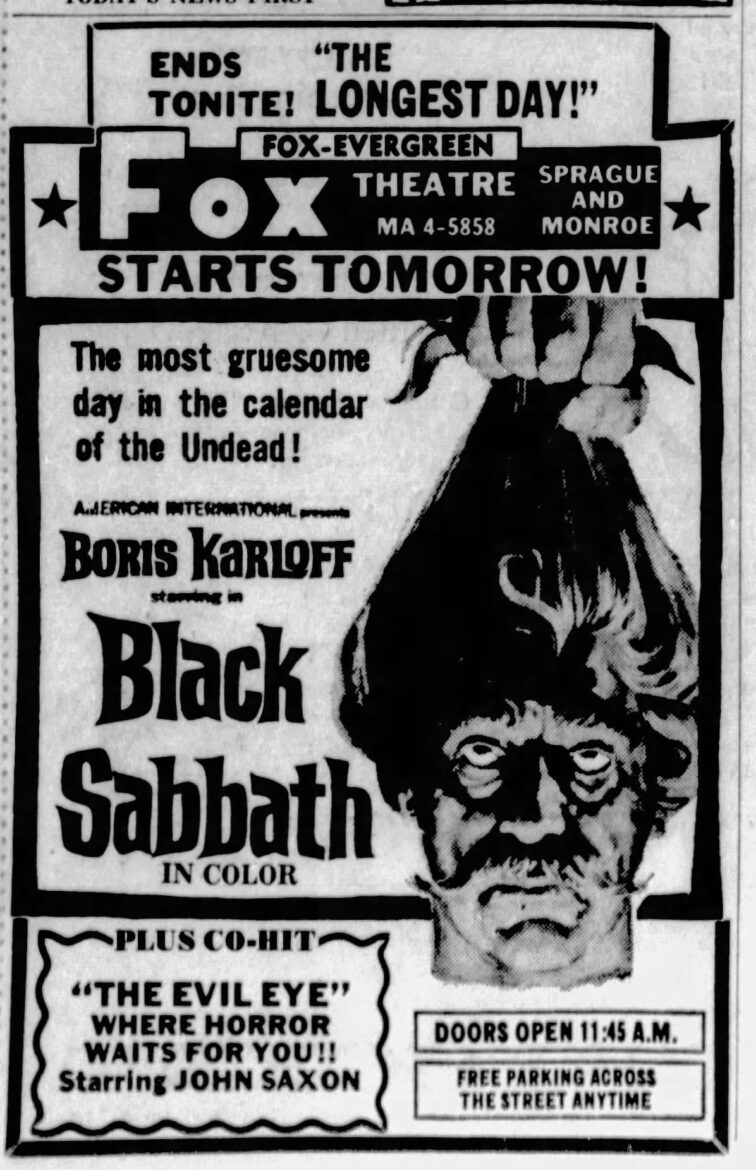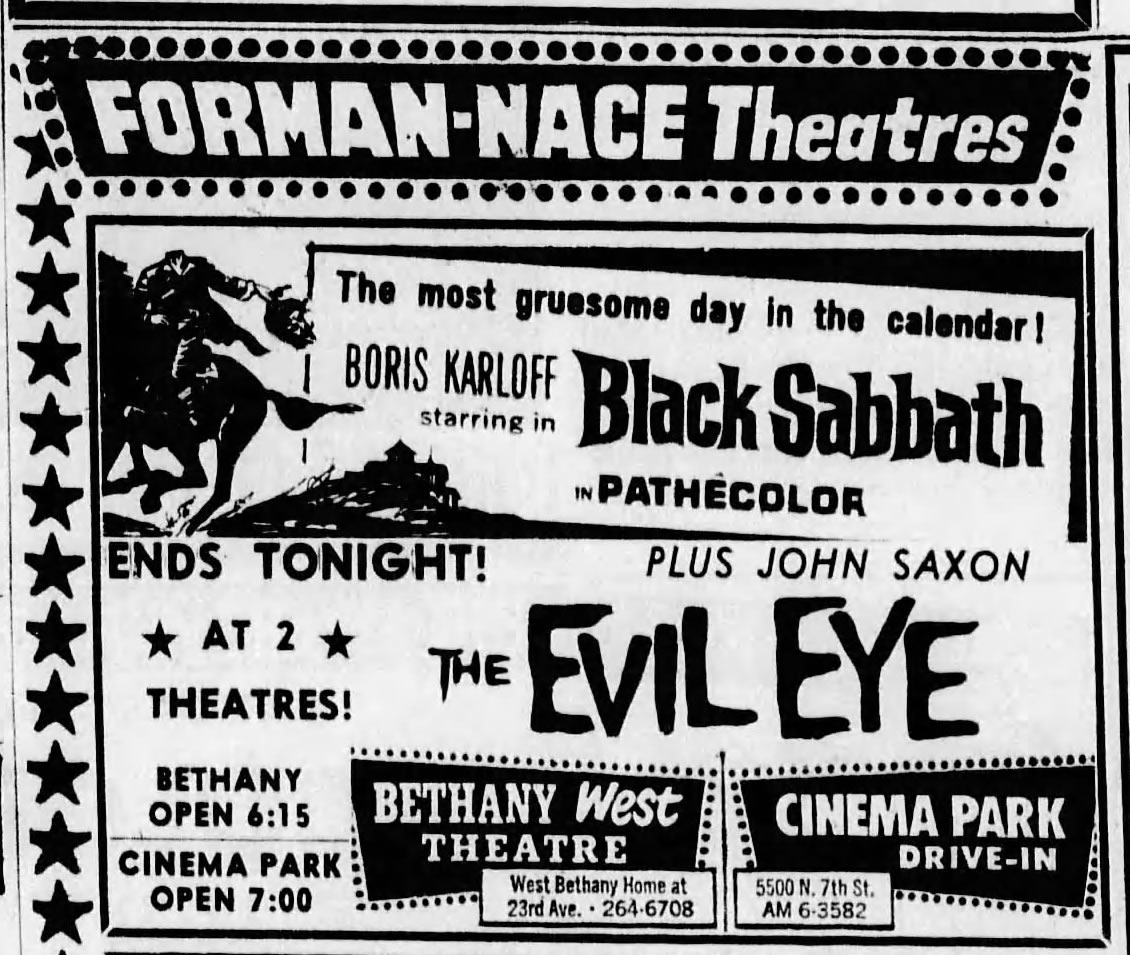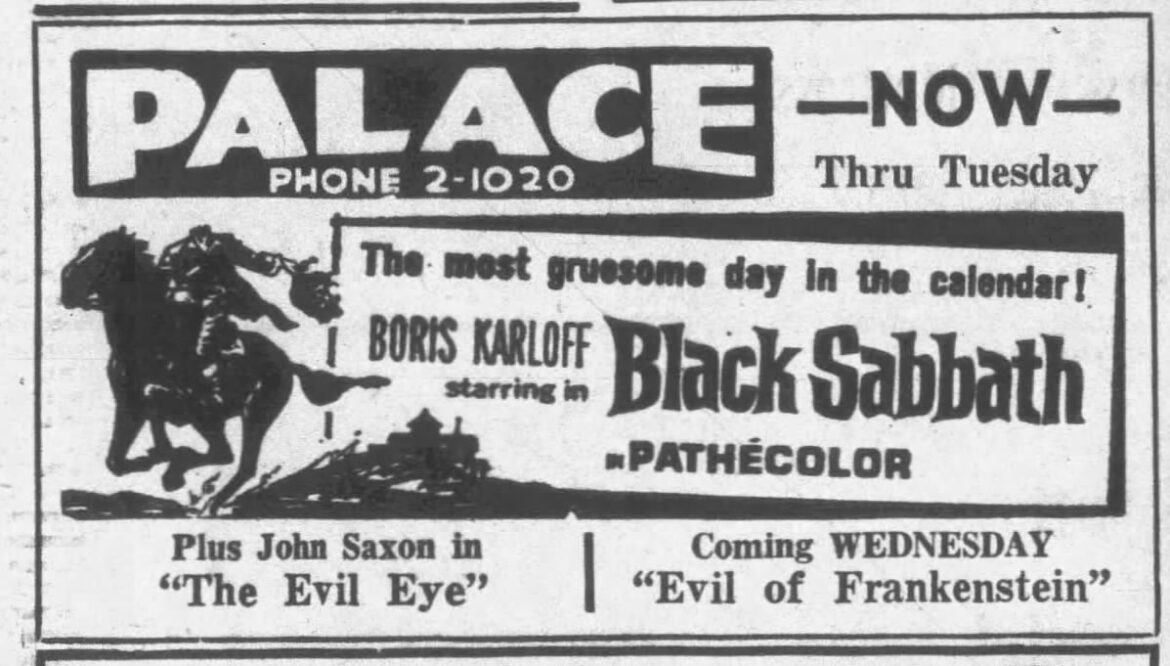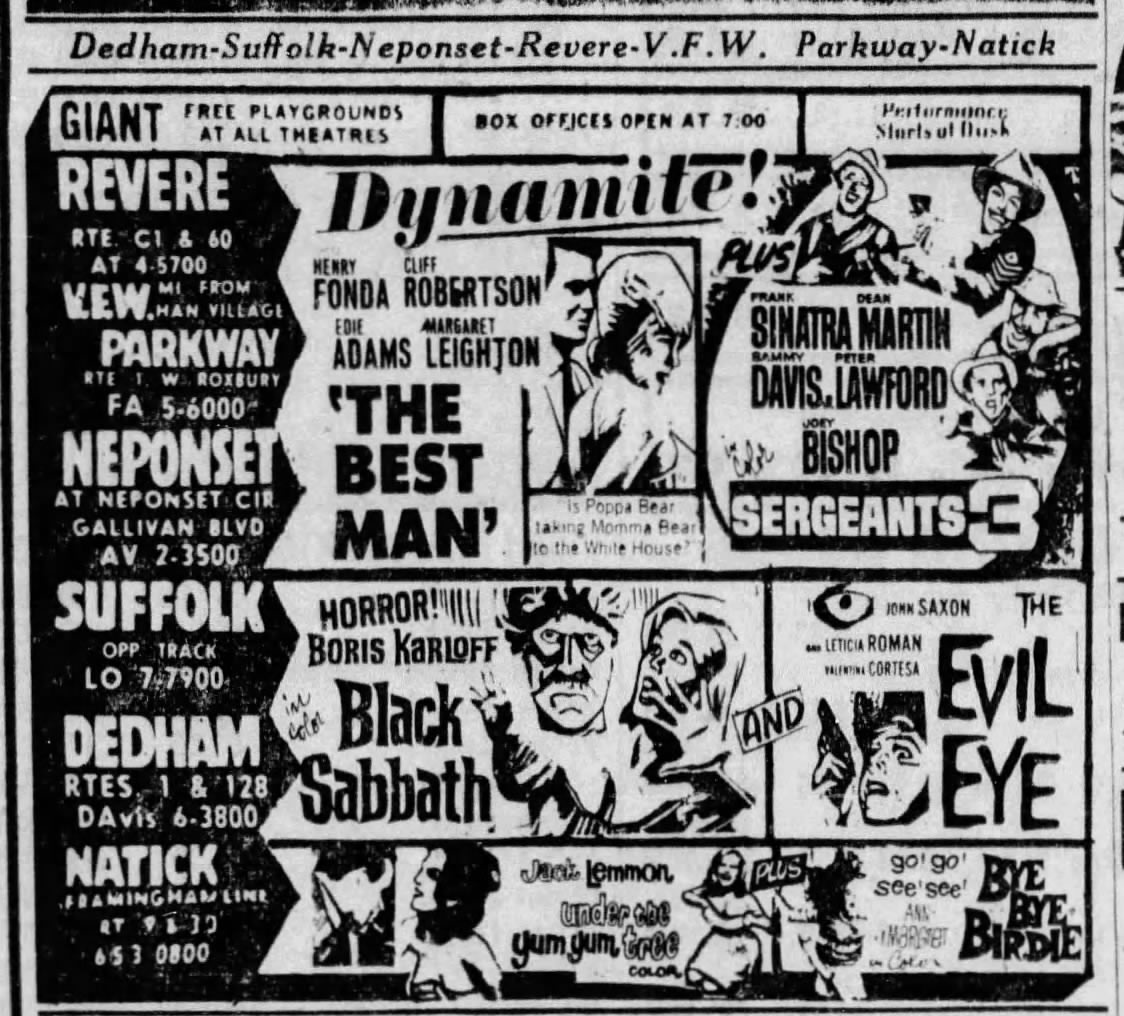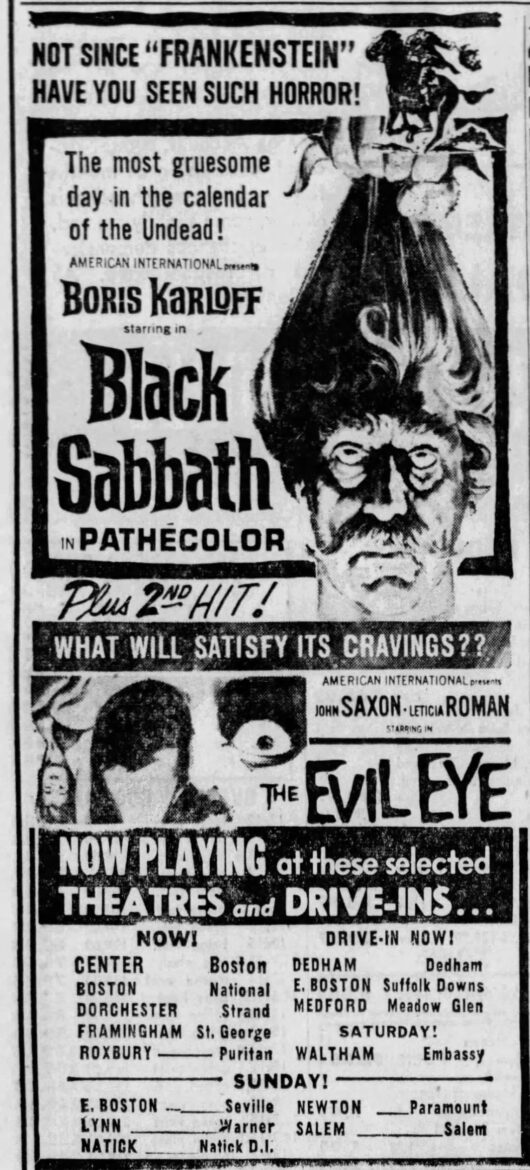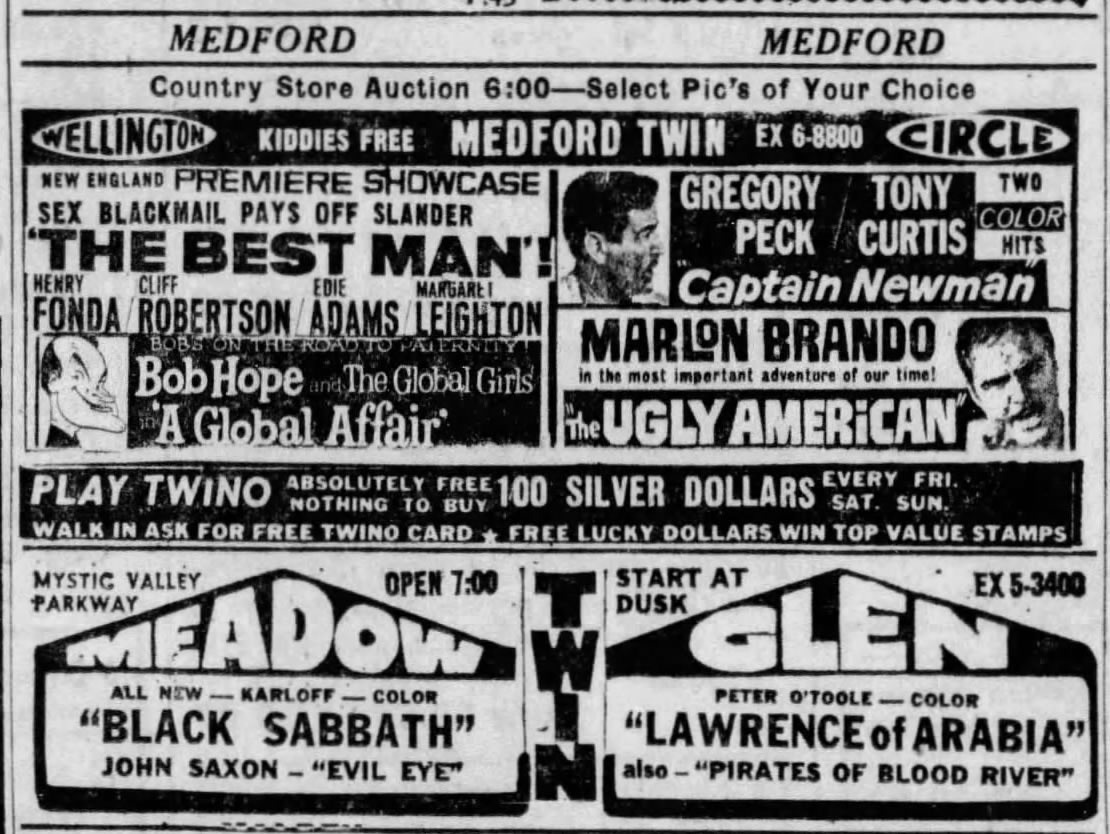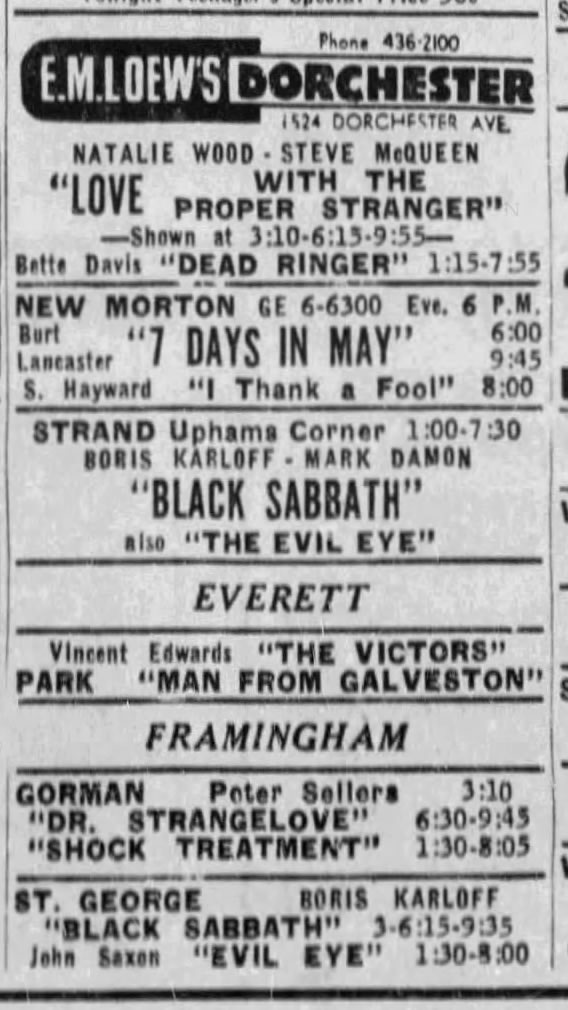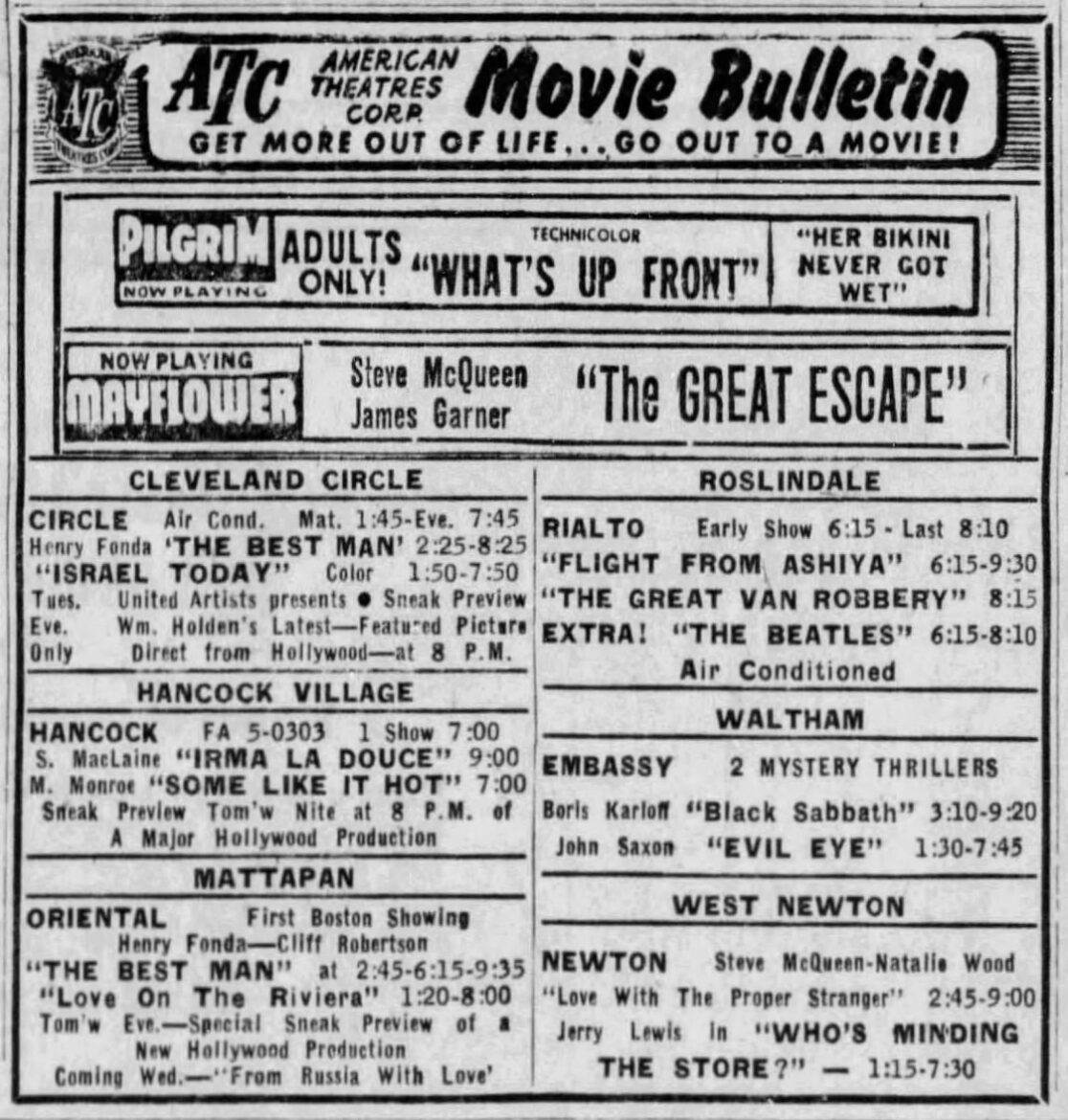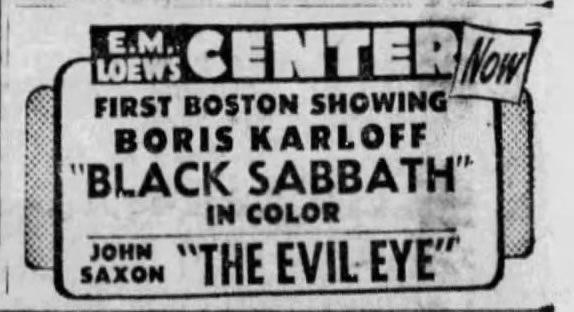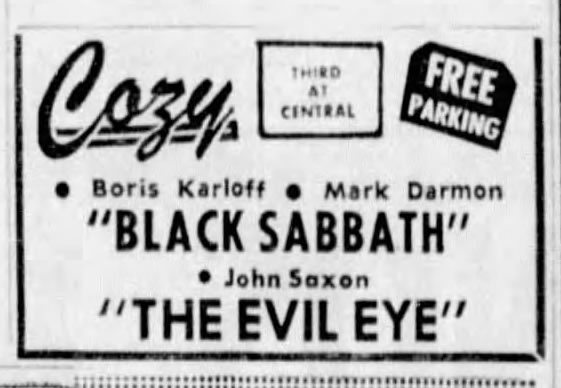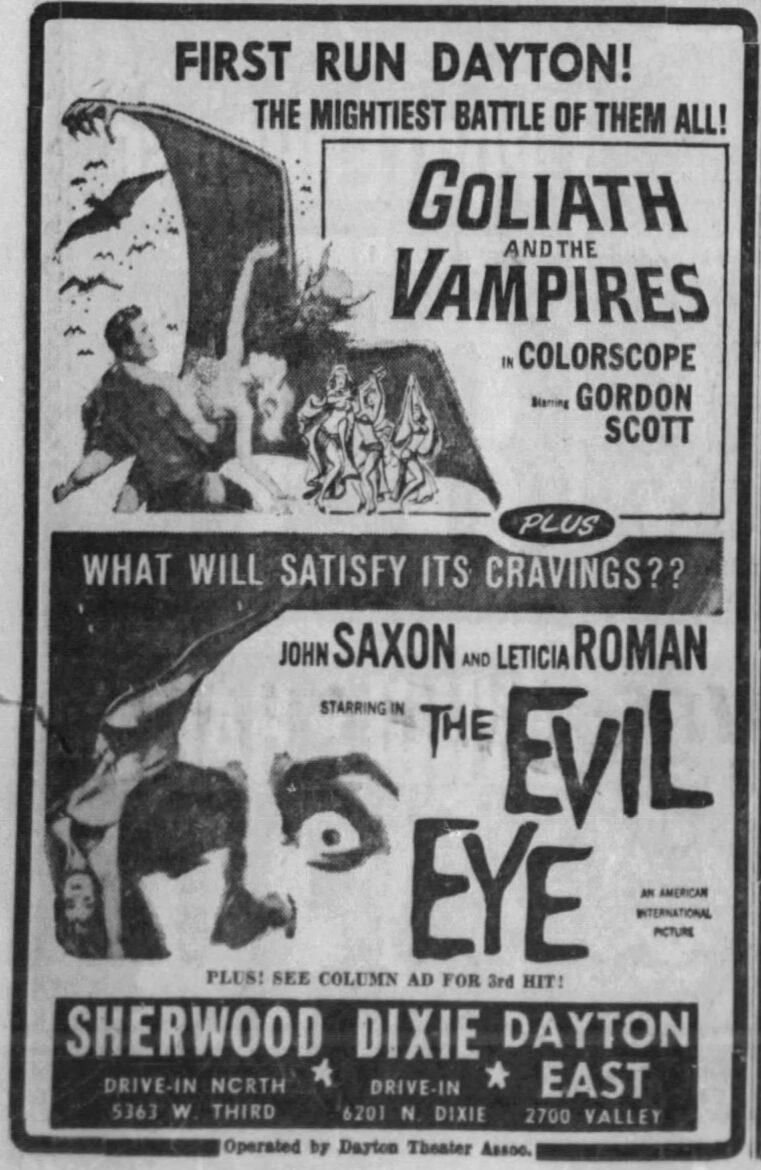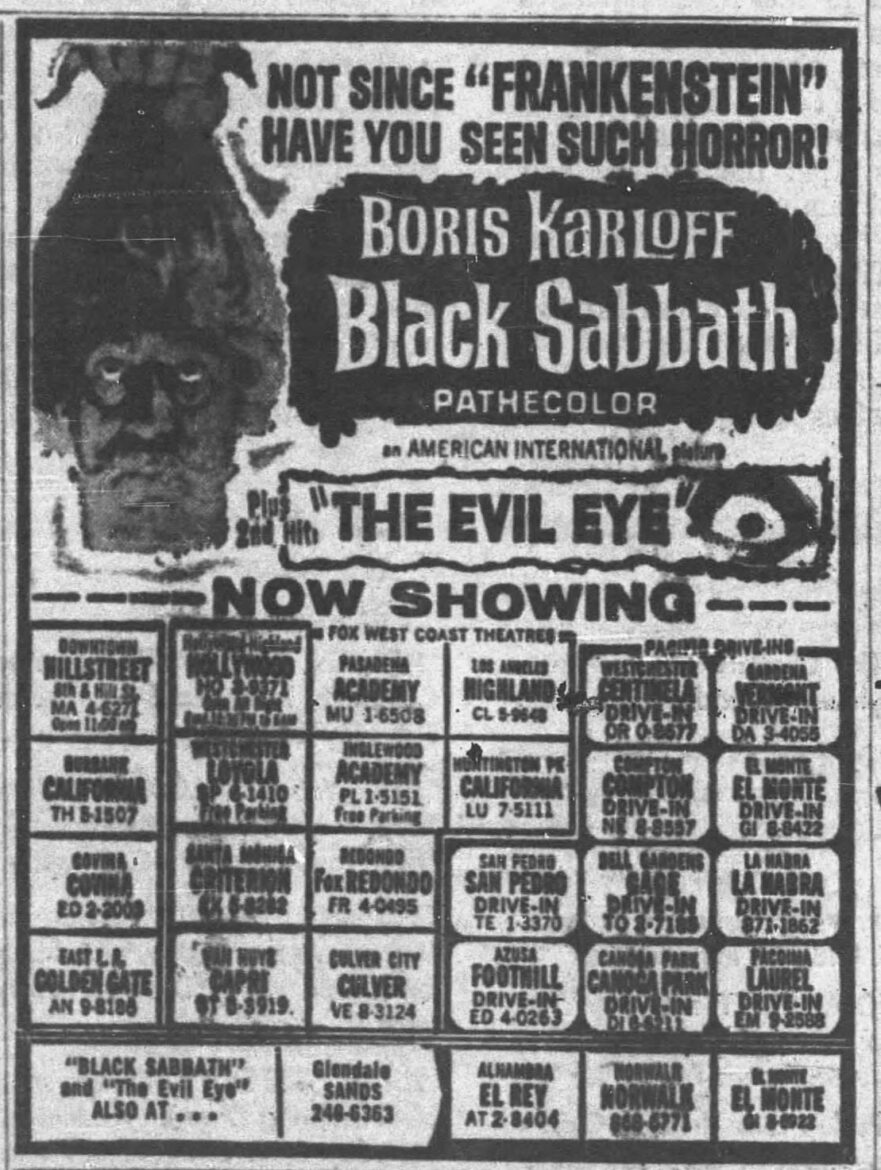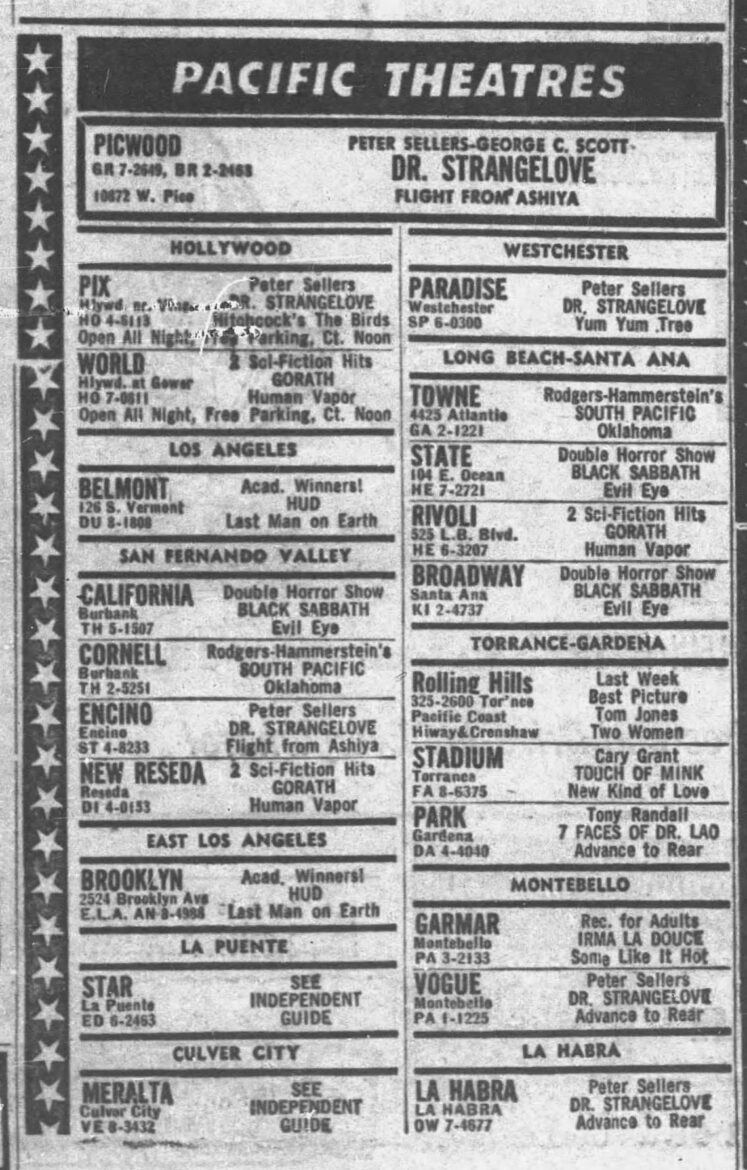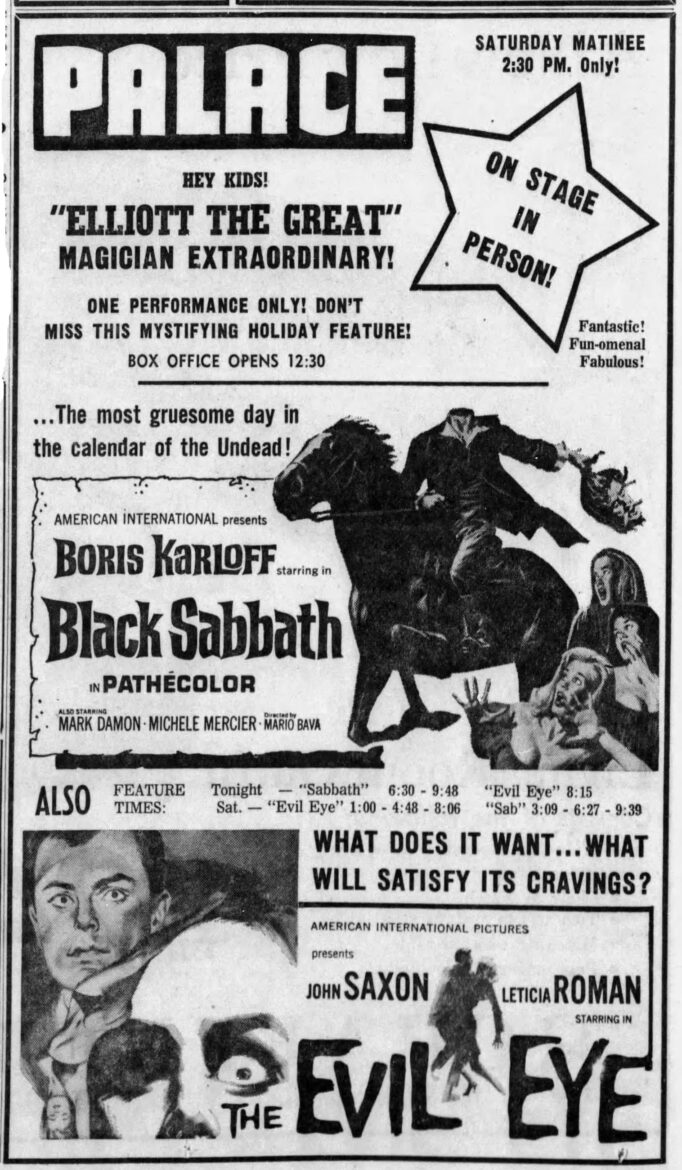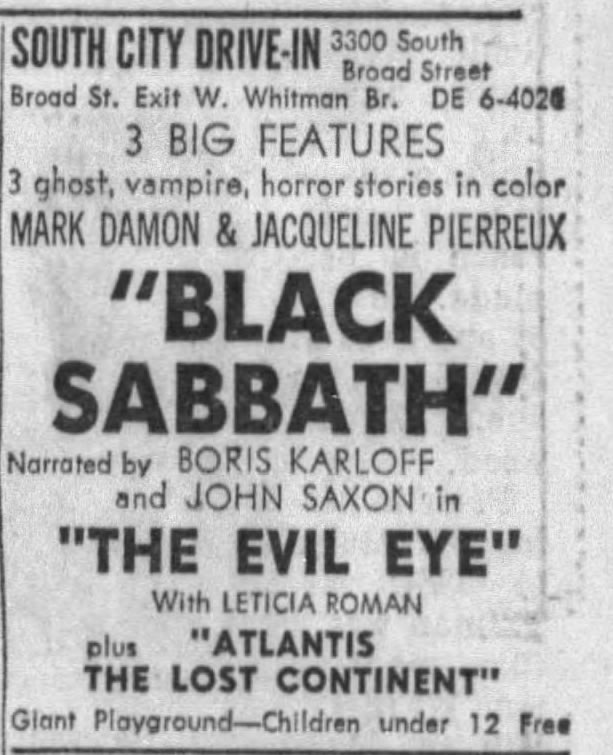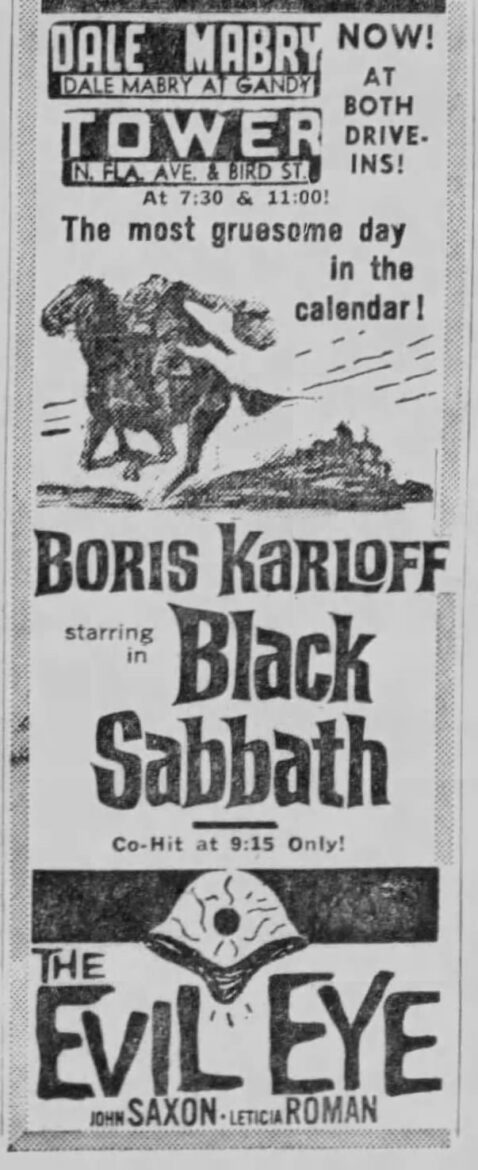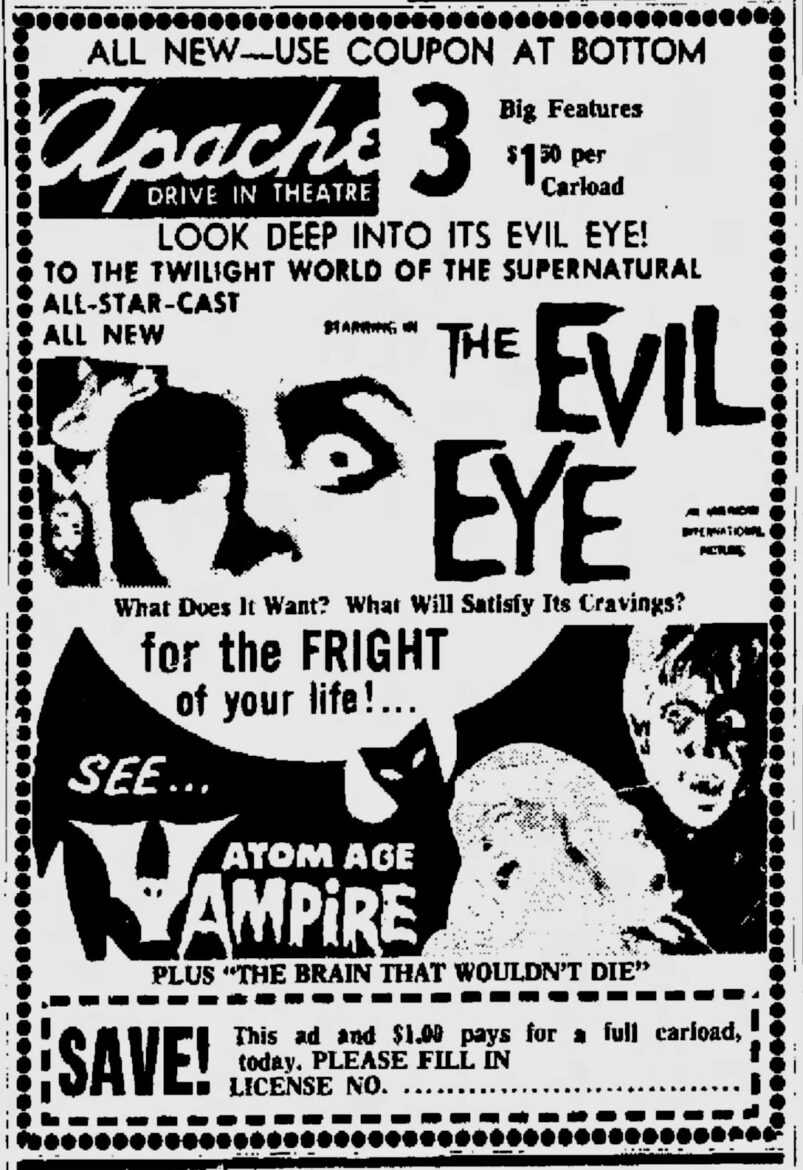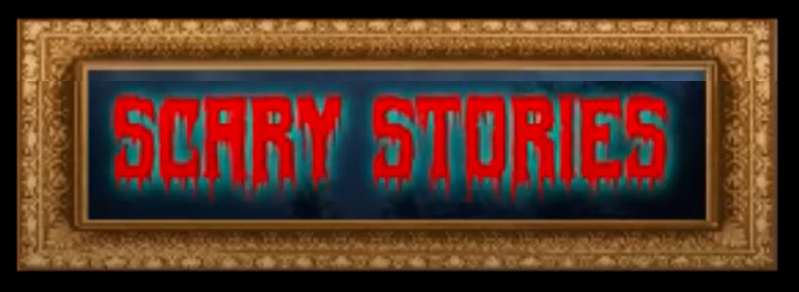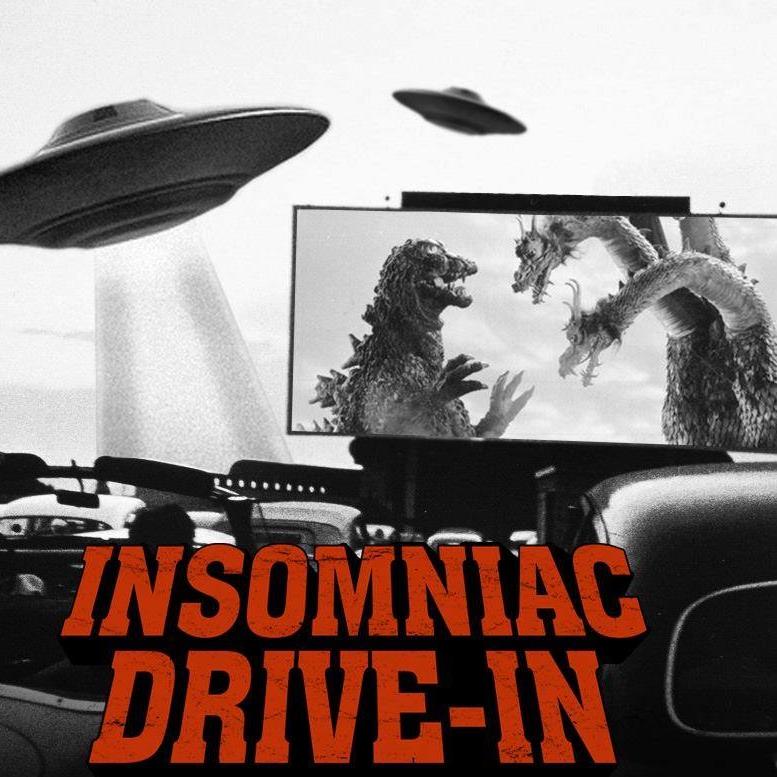As I delve into the films of legendary actor John Saxon, the first movie I’m going to discuss was made in Italy and directed by legendary horror maestro, Mario Bava. My wife and I were attending the April Ghouls Drive-In Monster-Rama 2023 at the Riverside Drive-In in Vandergrift, Pennsylvania, and one of the vendors stationed in the concession stand was the great Ron Adams of Creepy Classics. As I perused their DVDs for sale, this John Saxon film jumped out at me, so I bought it. At the time, I hadn’t even conceived of this blog, but I knew that I needed the movie. The DVD I watched was released by Kino Classics and contains the original Italian version, as well as the English release. The DVD menu utilizes the amazing poster art from the film.
Released in Italy in 1963 as “La Ragazza Che sapeva troppo” aka “The Girl Who Knew Too Much,” and in the US in 1964 under the title, “The Evil Eye.” This was Bava’s last film shot in black and white, and the movie has a nice feel to it, similar to the films of William Castle (“The Tingler,” “House on Haunted Hill”). This is one of those 60s horror movies that would be enjoyable on a Saturday afternoon with the family as it’s not overly violent or gory, and the story and characters are truly engaging.
Letícia Román plays Nora Davis, a mystery novel enthusiast who travels to Rome, Italy to visit her aunt, where she encounters Dr. Marcello Bassi (John Saxon). Auntie passes away shortly thereafter, and a worried Nancy goes to the hospital to see Marcello but is mugged and knocked unconscious on the way. When she awakens, she sees a woman stumbling forward with a knife in her back, and a goateed man comes up behind her, pulling out the knife and dragging the body away. Nora reports this to the authorities, but they brush it off claiming she was simply having a hallucination. After her aunt’s funeral at a cemetery, she encounters Laura Torrani (Valentina Cortese, “Day for Night” 1973), who lives in the Piazza di Spagna where she witnessed the supposed murder. Laura had been planning to go on a vacation, so she invites Nora to stay at her house while she’s away.
There, Nora discovers a box full of newspaper clippings that are focused on several murders that took place years prior. The box also contains a child’s alphabet blocks, but the letters A, B, and C are missing, and the articles refer to the murderer as the “Alphabet Killer,” because the victims’ last names started with those letters. Nora realizes her last name is Davis, and becomes concerned that she might be next. As things get weirder for her, and she starts to become paranoid, Marcello tries to help her uncover whether or not what she saw was real, a hallucination, or perhaps an echo from the past. The tension builds, and the killer is eventually revealed causing Nora to fight for her life.
Roman has large, beautiful eyes that are reminiscent of horror actress Barbara Steele (“Black Sunday,” “Shivers”), and Bava takes advantage of that, using his skill with lighting to often highlight those captivating peepers. This was her first leading role, and she went on to do a few other projects including American TV shows “Mannix,” and “The Man From U.N.C.L.E.” among others. When we first see her, she’s wearing a snakeskin jacket which may represent cold and violent thoughts Nora has from reading murder mystery novels.
I viewed both versions, as well as listened to Tim Lucas’ insightful commentary on “Girl,” but I’m not going to get too deep into the differences between the two, as they’re both essentially the same story. For a more comprehensive, scene-by-scene comparison of the English and Italian versions, I suggest checking out Movie-censorship.com’s excellent breakdown. In one particular scene, a paranoid Nora laces the interior of the house she’s staying at with a ridiculous amount of string in order to stop or trap any intruder. It looks like a human-made spider web, and Lucas points out that it could represent what’s going on in the fertile imagination of a mystery novel enthusiast. Hilarity ensues when Marcello hurriedly enters upon hearing Nora screaming at one point.
What gets muddled between the translations is that at the beginning, there’s a guy who’s smuggling Kent cigarettes into Italy that also contain marijuana. This opens up several questions about whether or not Nora was seeing things due to being high. However, in the English version, there is no mention of marijuana, altering the story just a bit.
Italian composer Roberto Nicolosi, who also worked with Bava on “Black Sunday” (1960), creates a beautiful score for the European version. For “Evil Eye,” the master of lounge music, Les Baxter, concocted his own score for the film, which creates a lighthearted, authentically 1960s atmosphere. If you didn’t know better, you’d swear you were listening to music from something like “I Dream of Jeannie,” or “Bewitched,” and the music in the last third is reminiscent of John Williams’ score from season one of the classic Sci-Fi series, “Lost in Space.” Both scores are very good, and whichever one you want to listen to would depend on your mood. The voice dubbing is also well done here, with Saxon providing his own voice in the English version.
After completing the special effects heavy film, “Erik the Conqueror,” Bava took some time off and contemplated switching fully from directing to focusing on special effects. But, American International Pictures (AIP) heads, the legendary Samuel Arkoff and Jim Nicholson, had been co-producing films with Italian production companies, and talked Bava into returning to directing for “Girl.” Several great Italian screenwriters including Sergio Corbucci (“Django,” 1966) had their hand in the script, which auteur Luigi Cozzi (“Starcrash” 1978, “Devil Fish,” 1984) said started off as a romantic comedy and ended up becoming a thriller. Here, Bava also uses a malformed piece of glass that he puts in front of the camera lens to create a dreamlike effect in certain scenes, which is a brilliant visual device, and the DVD print is a beautiful transfer.
With regards to the funeral scene, the director was said to have been terrified of funerals, yet a great portion of his films have to do with death, dying, and sometimes funerals. Bava himself would next move into glorious color horror films, starting with the brutal “Blood and Black Lace” (1964), and would eventually use his skill to become one of the most renowned Italian horror film directors.
Saxon had been acting since 1954 and was in many romantic comedies, as well as the John Huston film, “The Unforgiven” (1960), alongside Hollywood greats Burt Lancaster and Audrey Hepburn. Here, he delivers a solid performance, and as my wife stated, he’s easy on the eyes. His low-key approach to Marcello tempers Roman’s anxious and paranoid Nora, and the two clearly had chemistry. As Tim Lucas points out in the commentary, apparently Saxon and Roman were friends and she invited him to be part of the film. Due to her heavy Italian accent, he heard her claim that it was going to be an “art film” which intrigued him as he hadn’t done one yet in his career. However, she actually said it was an ‘orrah film – the word horror getting lost in her accent.
Several scenes were removed from the Italian version, and in the American release, several others were added in. That, coupled with the score, brought a level of humor to the film, changing its tone dramatically. One thing I found quite odd at the end of the English version, is a scene in which Saxon and Roman are on a tram that’s akin to a ski lift. But instead of seats, the lift is comprised of cages in which people stand. I’ve never seen anything like that before, but it seems actually cool as you can travel up and down the mountainside, taking in the breathtaking view of scenic Italy.
Overall, both “The Evil Eye” and “The Girl Who Knew Too Much” are enjoyable films, with solid performances and splendid directing. The ending has a nice twist that you might see coming, but that doesn’t matter as the journey itself is thoroughly enjoyable. It’s clear from this point that both Saxon and Bava would each go on to bigger and better things in their careers, building upon what they did here.
If you like this blog, send your feedback to havenpodcasts@gmail.com.
Below are newspaper ads from the film’s US release. Click on images to enlarge.

